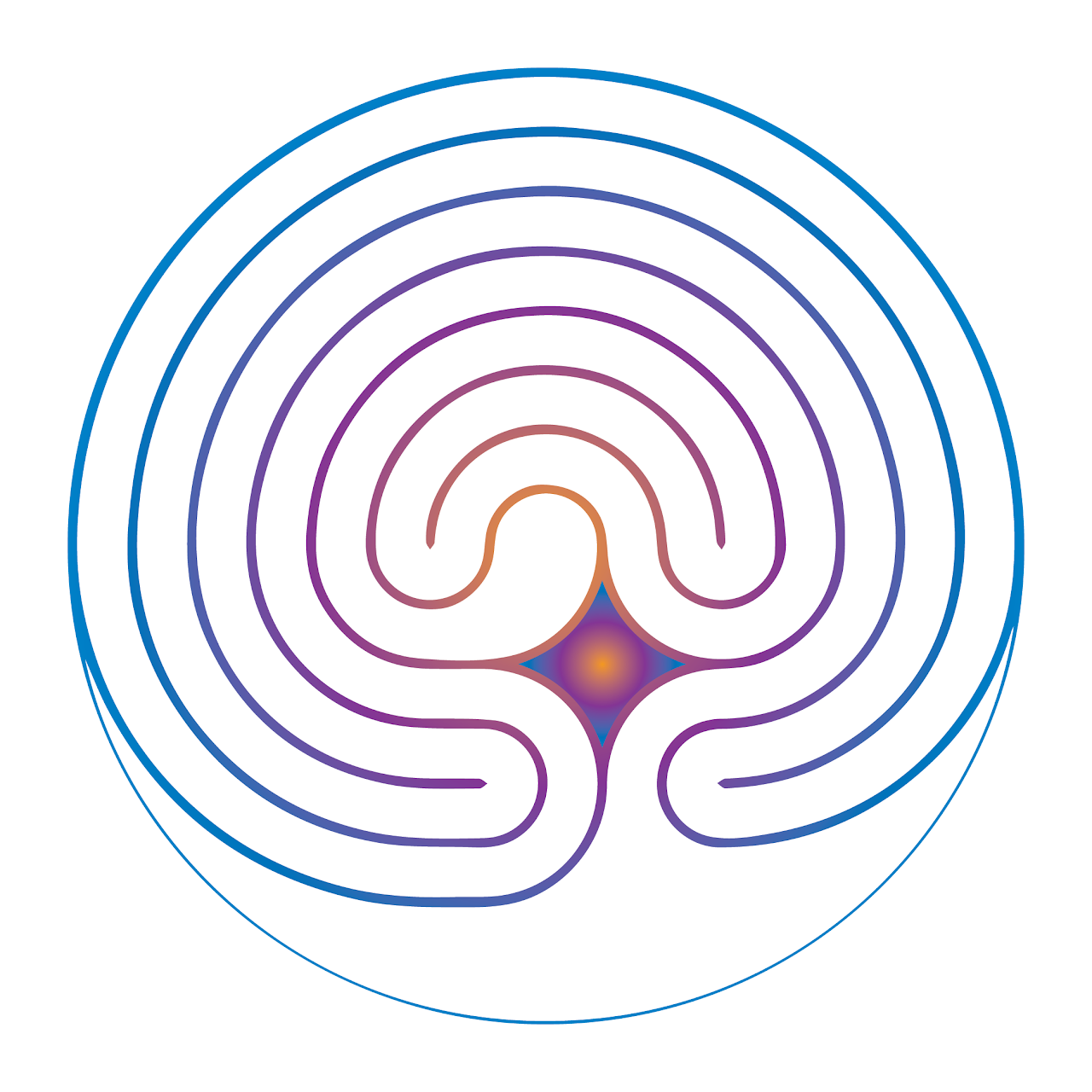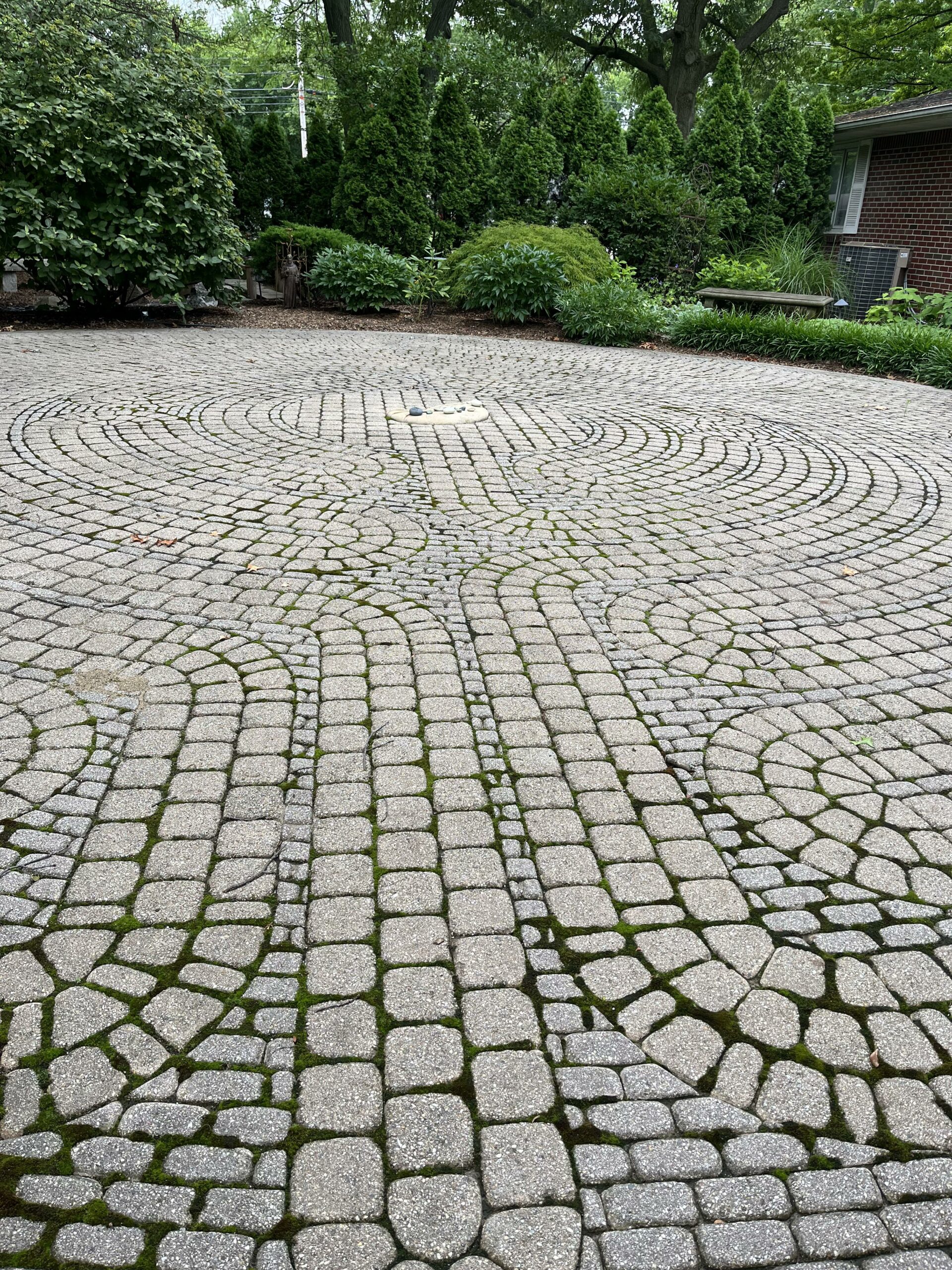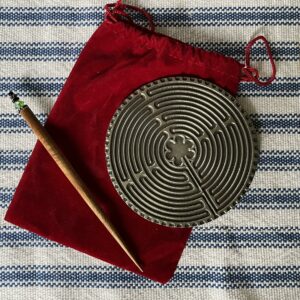A labyrinth might look like a maze from a distance, but closer inspection reveals that a labyrinth has a specific pattern and no dead ends. Unlike a maze that makes you concentrate and retrace your steps, the labyrinth is not a game or puzzle to figure out. Although labyrinths can follow different designs, the most common one has a single entrance and exit. This unicursal pattern is a single path that leads to a center and then back out. As the path winds back and forth, you turn in different directions, but it is not designed to be confusing. A labyrinth can be a tangible tool for mindfulness to heighten thoughts, reflection, prayer, meditation, or insight.

Labyrinths have appeared on pottery, etchings on walls or set in floors for thousands of years. They can be found indoors, laid into flooring or outdoors in a garden space. One article attributes their current use as a “contemporary need to search for simplicity, deepen self-awareness, access intuition and creativity, and connect to the soul” (Griffith, 2002).

There is no right or wrong way to walk a labyrinth but there are some common practices. Walking a labyrinth can be done as a personal activity or with a small group. The time and space before entering the labyrinth can be used to take a deep breath, clear the mind of distractions, and possibly choose a topic, intention, quote, or mantra to focus on during the walk. This can be a time to quiet the mind and release any expectations. When walking the labyrinth, the act of placing one foot in front of another can be a metaphor for life. Move at your own pace. As mentioned, it is not a maze, and it is also not a race. Use the path to keep your mind in the moment. When you have reached the center take as much time as you want to focus on the moment. You might or might not have any new ideas or feelings. This can be a time to center or ground yourself with your intentions. When you have decided it’s time to leave the center, follow the path back out. This walk out is symbolic for returning to daily life. After exiting the labyrinth some people choose to journal or take more time to focus on any thoughts, ideas, aspirations, inspirations, or feelings that have surfaced during the walk.
Labyrinths exist around the world. In the United States, it is not uncommon to find them in gardens and parks, places of worship, community spaces, hospitals, clinics, health care facilities, schools or universities. Is there a labyrinth near you? The World-Wide Labyrinth Locator lists over 6,000 labyrinths in over 90 countries around the world! It’s as simple as adding a zip code and choosing a mile radius to search for labyrinths.
Labyrinths in parks and gardens

A labyrinth can be a nice addition to a public park or personal garden or yard. Some gardens have permanent stone or gravel paths. Other gardens use plants as part of the design to define the labyrinth path. For example, there is a Daffodil Labyrinth. When daffodils, and then later, violet grape hyacinths appear in the springtime, they map out the grass path of the labyrinth walk. After the spring flowers have faded, the space is mowed and will reappear the next year. A grass labyrinth can be created in an open space, where the path to walk is mowed lower than the surrounding boarder. The State Botanical Garden of Tennessee has a permanent labyrinth that is surrounded by their iris collection. In Ohio, visitors to the Chadwick Arboretum and Learning Gardens can walk The Lois B. Small and Gladys B. Hamilton Labyrinth. A white garden designed around the labyrinth provides a restful, calming atmosphere.

If there is not a physical labyrinth near you, there are options to practice a “walk”. A handheld labyrinth, followed by your finger or stylus is portable. Handheld labyrinths can be created out of different materials such as wood, metal, fabric or even printed on paper. You can purchase one or create your own. We have used sidewalk chalk on a parking lot to create a temporary labyrinth for a summer youth camp. There is also a free app called labyrinth journey. It is not as immersive as a handheld or walking labyrinth, but it can be a useful tool on your phone. A labyrinth is a tool to help remember and understand that “Life is a journey, not a destination.” Ralph Waldo Emerson. What type of labyrinth can you use to bring some mindful moments to your life?


